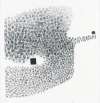Beyond
The Eye
Victor Pasmore's Beyond The Eye series, created in 1995, comprises three lithographs that develop his investigation into abstract forms and their relationship with the viewer's spatial perception. This series serves as an exploration of colour and geometric abstraction, pushing the boundaries of visual interpretation.
Victor Pasmore Beyond The Eye For sale
Beyond The Eye Market value
Auction Results
| Artwork | Auction Date | Auction House | Return to Seller | Hammer Price | Buyer Paid |
|---|
Sell Your Art
with Us
with Us
Join Our Network of Collectors. Buy, Sell and Track Demand
Meaning & Analysis
The Beyond The Eye series reflects Pasmore's continuous exploration of Abstract Art, where the interaction of form and colour plays a pivotal role in constructing a visual narrative that poses questions concerning the relationships between an artwork, the viewer and visual perception more broadly.
Similarly to Pasmore's series Magic Eye, Beyond The Eye utilises a variety of fuzzy shapes that appear to float freely within the compositions of each print in the series. Each lithograph is a careful arrangement of curves, lines, and colour pools that guide the eye across the page, creating a sense of movement and depth that challenges the flatness of the medium.
The use of colour in this series is particularly notable for its ability to affect spatial perception. Pasmore employs contrasts—murky blues against muted greys—to create the illusion of foreground and background. These colour dynamics invite viewers to perceive the prints as three-dimensional spaces rather than two-dimensional surfaces.
Beyond The Eye reflects Pasmore's philosophical inquiry into the nature of perception. The series can be viewed as a continuation of his interest in creating art that interacts with the viewer, engaging more than just the visual senses by prompting personal interpretation and emotional responses.





